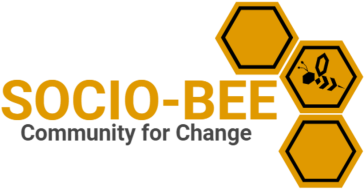This paper examines how a serious game approach could support a participatory planning process by bringing stakeholders together to discuss interventions that assist the development of sustainable urban tourism. A serious policy game was designed and played in six European cities by a total of 73 participants, reflecting a diverse array of tourism stakeholders. By observing in-game experiences, a pre- and post -game survey and short interviews six months after playing the game, the process and impact of the game was investigated. While it proved difficult to evaluate the value of a serious game approach, results demonstrate that enacting real-life policymaking in a serious game setting can enable stakeholders to come together, and become more aware of the issues and complexities involved with urban tourism planning. This suggests a serious game can be used to stimulate the uptake of academic insights in a playful manner. However, it should be remembered that a game is a tool and does not, in itself, lead to inclusive participatory policymaking and more sustainable urban tourism planning. Consequently, care needs to be taken to ensure inclusiveness and prevent marginalization or disempowerment both within game-design and the political formation of a wider participatory planning approach.
MULTIFILE

Report in English on the results of the international Master Class by Stadslab on intercultural park design. The case described is a design for for a park in Eastern Ukrainian city of Melitopol. A redevelopment strategy is proposed for its historic Gorky Park (1936). The book also contains essays by intercultural cities expert Phil Wood and introductions by Marc Glaudemans, Beatriz Ramo and Olexandr Butsenko.
DOCUMENT

In the debate about smart cities, an alternative to a dominant top-down, tech-driven solutionist approach has arisen in examples of ‘civic hacking’. Hacking here refers to the playful, exploratory, collaborative and sometimes transgressive modes of operation found in various hacker cultures, this time constructively applied in the context of civics. It suggests a novel logic to organise urban society through social and digital media platforms, moving away from centralised urban planning towards a more inclusive process of city-making, creating new types of public spaces. This book takes this urban imaginary of a hackable city seriously, using hacking as a lens to explore examples of collaborative city-making enabled by digital media technologies. Five different perspectives are discussed. Hacking can be understood as (1) an ethos, a particular articulation of citizenship in the network era; (2) as a set of iterative and collaborative city-making practices, bringing out new roles and relations between citizens, (design) professionals and institutional actors; (3) a set of affordances of institutional structures that allow or discourage their appropriation; (4) a critical lens to bring in notions of democratic governance, power struggles and conflict of interests into the debate on collaborative city-making; and (5) a point of departure for action research. After a discussion of these themes, the various chapters in the book are briefly introduced. Taken together they contribute to a wider debate about practices of technology-enabled collaborative city-making, and the question how city hacking may mature from the tactical level of smart and often playful interventions to a strategic level of enduring impact.
DOCUMENT

SOCIO-BEE proposes that community engagement and social innovation combined with Citizen Science (CS) through emerging technologies and playful interaction can bridge the gap between the capacity of communities to adopt more sustainable behaviours aligned with environmental policy objectives and between the citizen intentions and the real behaviour to act in favour of the environment (in this project, to reduce air pollution). Furthermore, community engagement can raise other citizens’ awareness of climate change and their own responses to it, through experimentation, better monitoring, and observation of the environment. This idea is emphasised in this project through the metaphor of bees’ behaviour (with queens, working and drone bees as main CS actors), interested stakeholders that aim at learning from results of CS evidence-based research (honey bears) and the Citizen Science hives as incubators of CS ideas and projects that will be tested in three different pilot sites (Ancona, Marousi and Ancona) and with different population: elderly people, everyday commuters and young adults, respectively. The SOCIO-BEE project ambitions the scalable activation of changes in citizens’ behaviour in support of pro-environment action groups, local sponsors, voluntary sector and policies in cities. This process will be carried out through low-cost technological innovations (CS enablers within the SOCIO BEE platform), together with the creation of proper instruments for institutions (Whitebook and toolkits with recommendations) that will contribute to the replication, upscaling, massive adoption and to the duration of the SOCIO-BEE project. The solution sustainability and maximum outreach will be ensured by proposing a set of public-private partnerships.For more information see the EU-website.
